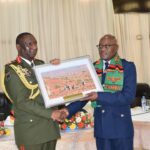It is evident, even without delving into technical data, that Zambia has had a highly successful maize harvest this season. Across rural roads, local markets, and storage depots, the signs of an abundant maize supply are unmistakable. However, while the Millers Association of Zambia (MAZ) has raised concerns about reduced mealie meal demand and operational challenges in the milling sector—partly attributed to power supply issues—this explanation overlooks the larger and more important picture: Zambia is not facing a supply crisis. In fact, the government-led agricultural policy is beginning to yield significant results.
The 2024–2025 farming season has seen a bumper maize harvest across many regions of Zambia. This is no coincidence, nor a mere stroke of luck. It is the outcome of intentional planning and diligent follow-through by the government. Although there were some logistical challenges with fertilizer distribution last year, the situation was quickly stabilized. By the time the planting season commenced, cooperatives nationwide had received their agricultural inputs, largely on time, thanks to the government’s Fertilizer Input Support Programme (FISP) and credit facilities.
Where there were pockets of mismanagement, such as in Mkushi, the government acted decisively. Clear pronouncements were made, including the deregistration and punishment of cooperative chairpersons or members found guilty of misappropriating fertilizer or seed. This commitment to accountability restored order and integrity to a system that had, in the past, been susceptible to abuse.
As a result of these efforts, many farmers across Zambia were empowered to grow. And grow they did. Today, most regions report healthy maize reserves, with some localities even surpassing expected yields. The notion that milling operations are struggling due to poor power supply is difficult to reconcile with the on-the-ground reality, where farmers and transporters are experiencing an entirely different picture.
The success of this season’s harvest is also a product of Zambia’s broader economic reforms. The country’s debt restructuring has freed up resources that have been channeled into agricultural inputs. Alongside this, increased investment in rural infrastructure has made it easier for farmers to transport and store their produce. These investments may not yield immediate, drastic results, but they are a clear indication that long-term planning is starting to bear fruit. These developments are too significant to ignore. Kulolekesha!
While the statement from MAZ does highlight some important issues—albeit indirectly—it emphasizes the need for better coordination between stakeholders. If mills are operating slowly despite an abundant maize crop, the conversation must shift toward improving market linkages, enhancing storage strategies, demand forecasting, and addressing power supply challenges. Power cuts have been a reality for many sectors in Zambia for some time, and while they undoubtedly pose a challenge, it would be unfair to attribute the overall market conditions to power supply issues alone in an otherwise successful agricultural season.
Looking to the future, the next step for Zambia’s agricultural sector is irrigation. The government has already laid the foundation with winter maize projects and national service initiatives aimed at reducing the country’s reliance on rain-fed agriculture. Expanding these programs will be crucial for ensuring Zambia’s food security, especially in light of potential climate shocks.
In a season that marks real progress for Zambia, it is vital to ensure that the narrative reflects the positive developments on the ground. There is maize. There is food security. And there is an agricultural system that, while not perfect, is moving in the right direction. The focus now must be on consolidating these gains and ensuring that every player in the agricultural value chain—from smallholder farmers to millers—is aligned, informed, and working together.
Zambia has achieved a great deal this season. Yes, challenges remain, but it is equally important to recognize and celebrate the successes. The agricultural sector is on the right path, and with continued commitment and coordination, the future looks bright for Zambia’s food security and economic growth.






